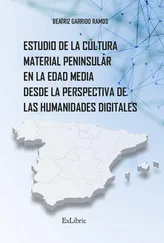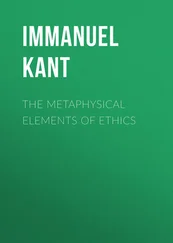97 82
98 83
99 84
100 85
101 86
102 87
103 88
104 89
105 90
106 91
107 92
108 93
109 94
110 95
111 96
112 97
113 98
114 99
115 100
116 101
117 102
118 103
119 104
120 105
121 106
122 107
123 108
124 109
125 110
126 111
127 112
128 113
129 114
130 115
131 116
132 117
133 118
134 119
135 120
136 121
137 122
138 123
139 124
140 125
141 126
142 127
143 128
144 129
145 130
146 131
147 132
148 133
149 134
150 135
151 136
152 137
153 138
154 139
155 140
156 141
157 142
158 143
159 144
160 145
161 146
162 147
163 148
164 149
165 150
166 151
167 152
168 153
169 154
170 155
171 156
172 157
173 158
174 159
175 160
176 161
177 162
178 163
179 164
180 165
181 166
182 167
183 168
184 169
185 170
186 171
187 172
188 173
189 174
190 175
191 176
192 177
193 178
194 179
195 180
196 181
197 182
198 183
199 184
200 185
201 186
202 187
203 188
204 189
205 190
206 191
207 192
208 193
209 194
210 195
211 196
212 197
213 198
214 199
215 200
216 201
217 202
218 203
219 204
220 205
221 206
222 207
223 208
224 209
225 210
226 211
227 212
228 213
229 214
230 215
231 216
232 217
233 218
234 219
235 220
236 221
237 222
238 223
239 224
240 225
241 226
242 227
243 228
244 229
245 230
246 231
247 232
248 233
249 234
250 235
251 236
252 237
253 238
254 239
255 240
256 241
257 242
258 243
259 244
260 245
261 246
262 247
263 248
264 249
265 250
266 251
267 252
268 253
269 254
270 255
271 256
272 257
273 258
274 259
275 260
276 261
277 262
278 263
279 264
280 265
281 266
282 267
283 268
284 269
285 270
286 271
287 272
288 273
289 274
290 275
291 276
292 277
293 278
294 279
295 280
296 281
297 282
298 283
299 284
300 285
301 286
302 287
303 288
304 289
305 290
306 291
307 292
308 293
309 294
310 295
311 296
312 297
313 298
314 299
315 300
316 301
317 302
318 303
319 304
320 305
321 306
322 307
323 308
324 309
325 310
326 311
327 312
328 313
329 314
330 315
331 316
332 317
333 318
334 319
335 320
336 321
337 322
338 323
339 324
340 325
341 326
342 327
343 328
344 329
345 330
346 331
347 332
348 333
Third Edition
charles ess
polity
Copyright © Charles Ess 2020
The right of Charles Ess to be identified as Author of this Work has been asserted in accordance with the UK Copyright, Designs and Patents Act 1988.
First published in 2009 by Polity Press
This edition published in 2020 by Polity Press
Polity Press
65 Bridge Street
Cambridge CB2 1UR, UK
Polity Press
101 Station Landing
Suite 300
Medford, MA 02155, USA
All rights reserved. Except for the quotation of short passages for the purpose of criticism and review, no part of this publication may be reproduced, stored in a retrieval system or transmitted, in any form or by any means, electronic, mechanical, photocopying, recording or otherwise, without the prior permission of the publisher.
ISBN-13: 978-1-5095-3342-8
ISBN-13: 978-1-5095-3343-5(pb)
A catalogue record for this book is available from the British Library.
Typeset in 10.25 on 13pt Scala
by Fakenham Prepress Solutions, Fakenham, Norfolk NR21 8NL
Printed and bound in Great Britain by TJ International Limited
The publisher has used its best endeavors to ensure that the URLs for external websites referred to in this book are correct and active at the time of going to press. However, the publisher has no responsibility for the websites and can make no guarantee that a site will remain live or that the content is or will remain appropriate.
Every effort has been made to trace all copyright holders, but if any have been overlooked the publisher will be pleased to include any necessary credits in any subsequent reprint or edition.
For further information on Polity, visit our website: politybooks.com
Barbara Becker(1955–2009): gifted and energetic philosopher, among the earliest to conjoin phenomenology, embodiment, and computational technologies in what proved to be prophetic and prescient ways
Preston K. Covey, Jr.(1942–2006): pioneer in conjoining philosophy and computation, including ethics, questions of democracy, and educational computing, and co-founder of what is now the International Association for Computing and Philosophy (IACAP)
Henry Rosemont, Jr.(1934–2017): leading authority in Chinese philosophy, tireless promoter of comparative philosophy and the liberal arts, inspiring activist and most generous mentor
Brilliant colleagues, generous and patient teachers, good friends: their spirits and guiding insights inform and inspire much of my life as well as this book.
A common risk, run by many forewords, is to bother the reader by repeating, sometimes less accurately, what the table of contents of the book already specifies or (and unfortunately this is often an inclusive or) by eulogizing the text and the author, plastering comments that look like semantic clones lifted from a myriad of other texts. It is in order to try to avoid both pitfalls that I shall skip here the usual hypes – which the book and its author do deserve, make no mistake – in order to speak to the reader a bit more frankly and hence, I hope, less uninformatively.
Like the previous edition, this third edition has all the usual virtues of a good textbook: it is carefully researched, clearly written, and argued intelligently. Yet these are basic features that we have come to expect from high-standard scholarship and do not make it special. That Charles Ess has written a good textbook is uninteresting. That he might have written an excellent (and now newly updated) one is what I would like to argue. What the book offers, over and above its competitors, are some remarkable and, to my knowledge, unique features. Let me be schematic. The list is not exhaustive, nor do the listed features appear in order of importance, but there is a good narrative that keeps them together.
First, the topic. The book addresses the gray but crucial area of ethical concerns raised by digital media. Of course, it is flanked on the shelf by many other textbooks in information and computer ethics, data ethics, AI ethics, and digital ethics (the terminology varies but topics often overlap), even more so than when the second edition was published, but, as Charles Ess well explains, this is not one of them, and it sticks out for its originality. For the book tackles that messy area of our ordinary lives where ethical issues are entangled with digital mass media, communication artifacts, information technologies of all sorts, computational processes, computer-mediated social interactions, algorithms, and so forth. Indeed, it is one of its virtues that it tries to clarify that “so forth” which I have just somewhat surreptitiously added in order to spare myself the embarrassment of a lack of a clear definition. As Schrödinger once said in a different context, this is a very sharp picture of a rather fuzzy subject.
Читать дальше












